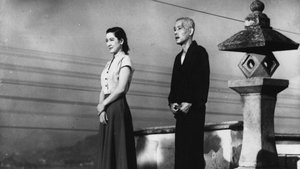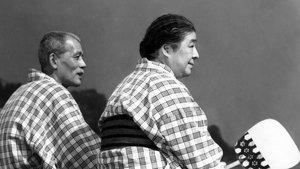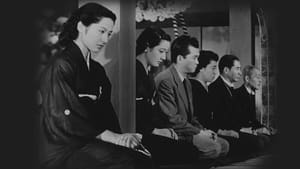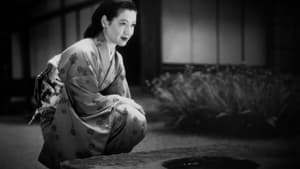Contact: [email protected]
Video Sources 0 Views
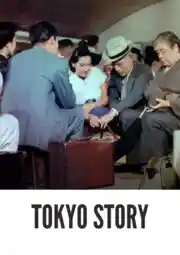
Tokyo Story Colorized 1953: Best Cinematic Journey Through Love and Loss in Vibrant Colors
Synopsis
[ez-toc]




Introduction
In the hallowed halls of old films, where black and white images flicker like ghosts of the past, there comes a revelation – “Tokyo Story Colorized 1953.” This timeless masterpiece, directed by the legendary Yasujiro Ozu, takes the audience on a poignant journey through love, loss, and the inexorable passage of time. As we delve into the heart of this cinematic gem, we explore the significance of this colorized rendition, the brilliance of Ozu’s directorial style, and the enduring legacy of Tokyo Story in Japanese cinema.
Read Media File Transfer Agreement: Terms and Conditions
Read FAQ
Brief Overview
“Tokyo Story Colorized 1953” is an enchanting remake of Ozu’s original 1953 film, a black and white classic titled “Tokyo Story.” The colorization breathes new life into the narrative, creating a visual spectacle while preserving the emotional depth of the original. The film revolves around an elderly couple, played with remarkable nuance by Chishū Ryū and Chieko Higashiyama, as they embark on a journey to Tokyo to visit their children.
Significance of the Film in Japanese Cinema
To grasp the magnitude of “Tokyo Story Colorized 1953,” one must first appreciate its role in the tapestry of Japanese cinema. Released in post-war Japan, the film encapsulates the societal changes and emotional turmoil of the era. The aftermath of World War II significantly influenced storytelling in Japanese cinema, and “Tokyo Story” stands as a testament to the evolving narrative landscape.
Yasujiro Ozu, a luminary in the world of cinema, directed the film as a reflection of the changing dynamics within Japanese families. The narrative transcends the boundaries of time, offering a universal exploration of familial bonds and the inevitability of generational shifts.
The Making of Tokyo Story Colorized 1953
Let us journey back to 1953, where Yasujiro Ozu, in collaboration with the Shochiku production company, crafted a narrative masterpiece that would resonate across generations. The film follows the journey of Shukishi and Tomi, an elderly couple from Onomichi, as they travel to Tokyo to visit their children and grandchildren.
Chishū Ryū and Chieko Higashiyama deliver captivating performances, embodying the complexity of aging and the emotional subtleties woven into the fabric of familial relationships. Ozu’s masterful storytelling unfolds in a series of contemplative shots and minimalistic yet powerful dialogues, leaving an indelible mark on the viewer’s heart.
The Significance of Tokyo Story in Japanese Cinema
The post-war period in Japan witnessed profound societal changes, and cinema became a mirror reflecting the shifting dynamics. “Tokyo Story” emerged as a poignant exploration of the evolving family structure, where traditional values collided with modernity. The film provides a window into the challenges faced by the older generation as they grapple with a rapidly changing world.
The historical context of “Tokyo Story” adds layers of depth to the narrative, making it a microcosm of Japanese society in transition. It captures the essence of an era marked by resilience, adaptation, and the enduring spirit of the Japanese people.
The Directorial Brilliance of Yasujiro Ozu: A Study on His Style and Themes
At the heart of “Tokyo Story Colorized 1953” lies the brilliance of Yasujiro Ozu’s directorial style, a unique blend of visual poetry and profound storytelling. Ozu’s approach to filmmaking, often categorized as Shomin-geki, involves a minimalist camera work and a focus on everyday life, making his films an intimate exploration of the human experience.
Analyzing Ozu’s directorial style unveils a deliberate pacing, a contemplative rhythm that allows the audience to absorb the nuances of the characters’ emotions. The colorized version accentuates the visual elements, enriching the film with a vibrant palette while preserving the authenticity of Ozu’s original vision.
Tokyo Story Colorized 1953: Revitalizing an Old Masterpiece
The decision to colorize an old classic is often met with skepticism, raising questions about the preservation of the film’s integrity. In the case of “Tokyo Story Colorized 1953,” the restoration process serves as a homage to the original while breathing new life into the visuals.
Understanding the meticulous process of colorization sheds light on the dedication to revitalizing cinematic treasures. The debate surrounding film colorization has been ongoing, with purists arguing against altering the artistic intent. However, when done tastefully, as in this case, colorization can enhance the viewing experience, offering a fresh perspective without compromising the essence of the film.
The Heartbreaking Portrayal of Love and Loss in Tokyo Story Colorized 1953
As the colorized hues dance across the screen, “Tokyo Story” unfurls a poignant portrayal of love and loss. The film transcends cultural boundaries, resonating with audiences worldwide as it delves into the intricacies of familial relationships, aging, and the inevitable heartbreak that accompanies the passage of time.
The emotional impact of the film lies in its ability to capture the universal experience of watching loved ones grow distant. The old couple, Shukishi and Tomi, navigate the complexities of their relationships with their children, grappling with the stark reality that the bonds they cherished may not be reciprocated in the same way.
Legacy and Influence: Tokyo Story’s Enduring Resonance
“Tokyo Story” stands as one of Yasujiro Ozu’s best-known films, a testament to its enduring resonance in the cinematic landscape. Its influence extends beyond borders, reaching filmmakers like Aki Kaurismaki, who have drawn inspiration from Ozu’s purist approach to storytelling.
The legacy of “Tokyo Story Colorized 1953” lies not only in its original form but also in the conversations it sparks about the essence of cinema. As we navigate the contemporary landscape of blockbuster hits and CGI-laden spectacles, “Tokyo Story” remains a beacon of purist cinema, a reminder that the power of storytelling lies in the emotional depth of the narrative.
Where to Watch Tokyo Story Colorized 1953?
For cinephiles eager to embark on this emotional journey, “Tokyo Story Colorized 1953” offers a unique viewing experience. The colorization enhances the visual impact without compromising the soul-stirring narrative crafted by Yasujiro Ozu. While some may argue that the black and white original holds its own charm, the colorized version adds a layer of vibrancy that introduces the classic to a new generation of viewers.
For those contemplating where to watch this cinematic masterpiece, keep an eye on streaming platforms for potential release dates. The colorized version promises to be a treat for both aficionados of classic cinema and those new to the beauty of Ozu’s storytelling.
In conclusion, “Tokyo Story Colorized 1953” is not just a film; it’s a testament to the timeless nature of love, the inevitability of loss, and the enduring legacy of Yasujiro Ozu. As the colors breathe life into the frames of this old classic, it continues to resonate with audiences, bridging the gap between generations and reminding us that some stories are timeless, no matter the palette in which they are painted.

